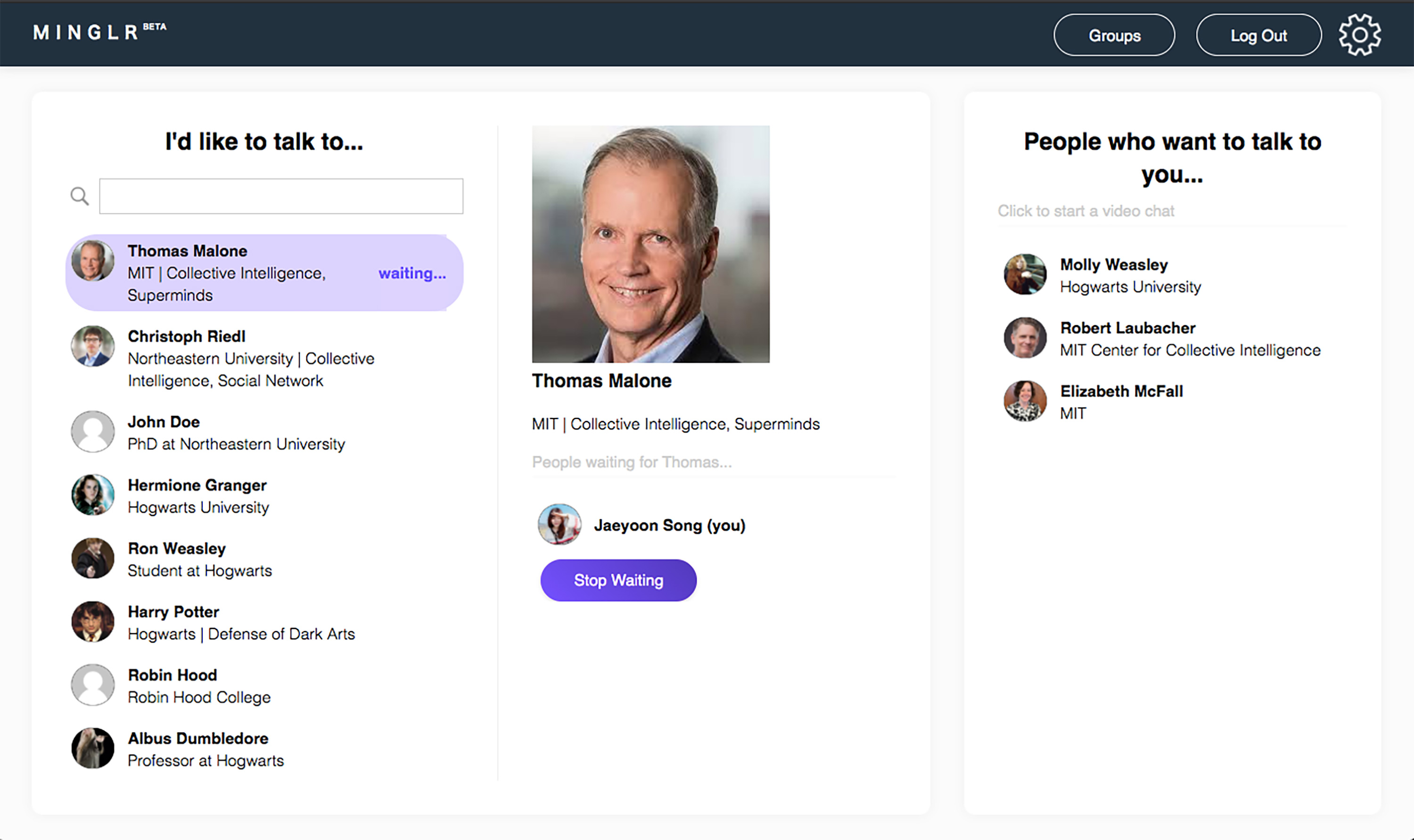MansBrand.com Articles Provided as noted by attribution.
Tom Malone refused to believe that watercooler conversations were dead just because so many people were suddenly working from home during the pandemic. He knew that random workplace chatter can help people build trust and form bonds. And as a researcher who studies technology and organizational design, he says, “it seemed obvious to me that there should be ways to support informal interactions” at virtual conferences and in online workspaces.
So Malone, who teaches at MIT’s Sloan School of Management, worked with a graduate student to develop Minglr, open-source software that anyone can download and use to meet with people who indicate they’re free to chat. The interface is like AIM and Zoom rolled into one: the left panel shows who’s free, along with an avatar and relevant information such as title and conversational interests; a middle panel lists a queue of people who want to talk with you now; the right panel shows another list of people who want to talk in the future.
Malone tested Minglr at a virtual conference in June and wrote a paper describing the response. About a third of attendees used the software, and they had two conversations apiece on average. He acknowledges that tools like Minglr and Zoom don’t perfectly replicate the feeling of being around the watercooler or coffee machine. But he doesn’t think impromptu conversations must be lost to the pandemic.

How Minglr looks on a desktop. Courtesy Prof. Thomas MaloneMINGLR
Malone isn’t the only one who thinks this type of spontaneous casual interaction can be saved. As the pandemic turns traditional office culture upside down, workers are finding creative ways to seek such connection. And these changes will likely linger after a coronavirus vaccine makes it safe for many to return to work. With offices already reconfiguring open plans, and the possibility that common spaces like snack bars and conference rooms will be off-limits, the literal watercooler conversation could be an artifact of a bygone era.
If that’s the case, replacing it is important. Experts suggest that at best, a workplace with no interaction between siloed groups—creative with finance, for example—can make people feel more like worker bees. At worst, it can stifle creativity and collaboration. Deborah
————
By: Tanya Basu
Title: Remote workers want to recreate those watercooler moments, virtually
Sourced From: www.technologyreview.com/2020/08/17/1006604/remote-workers-want-to-recreate-those-watercooler-moments-virtually/
Published Date: Mon, 17 Aug 2020 17:45:20 +0000
The post Remote workers want to recreate those watercooler moments, virtually appeared first on MansBrand.
from MansBrand https://www.mansbrand.com/remote-workers-want-to-recreate-those-watercooler-moments-virtually/?utm_source=rss&utm_medium=rss&utm_campaign=remote-workers-want-to-recreate-those-watercooler-moments-virtually
via IFTTT
No comments:
Post a Comment